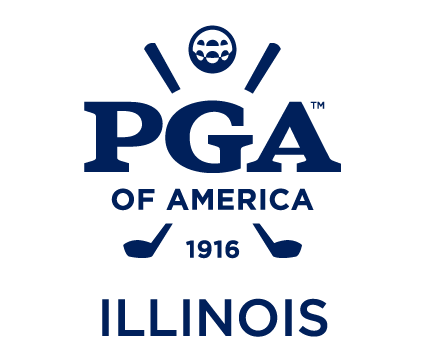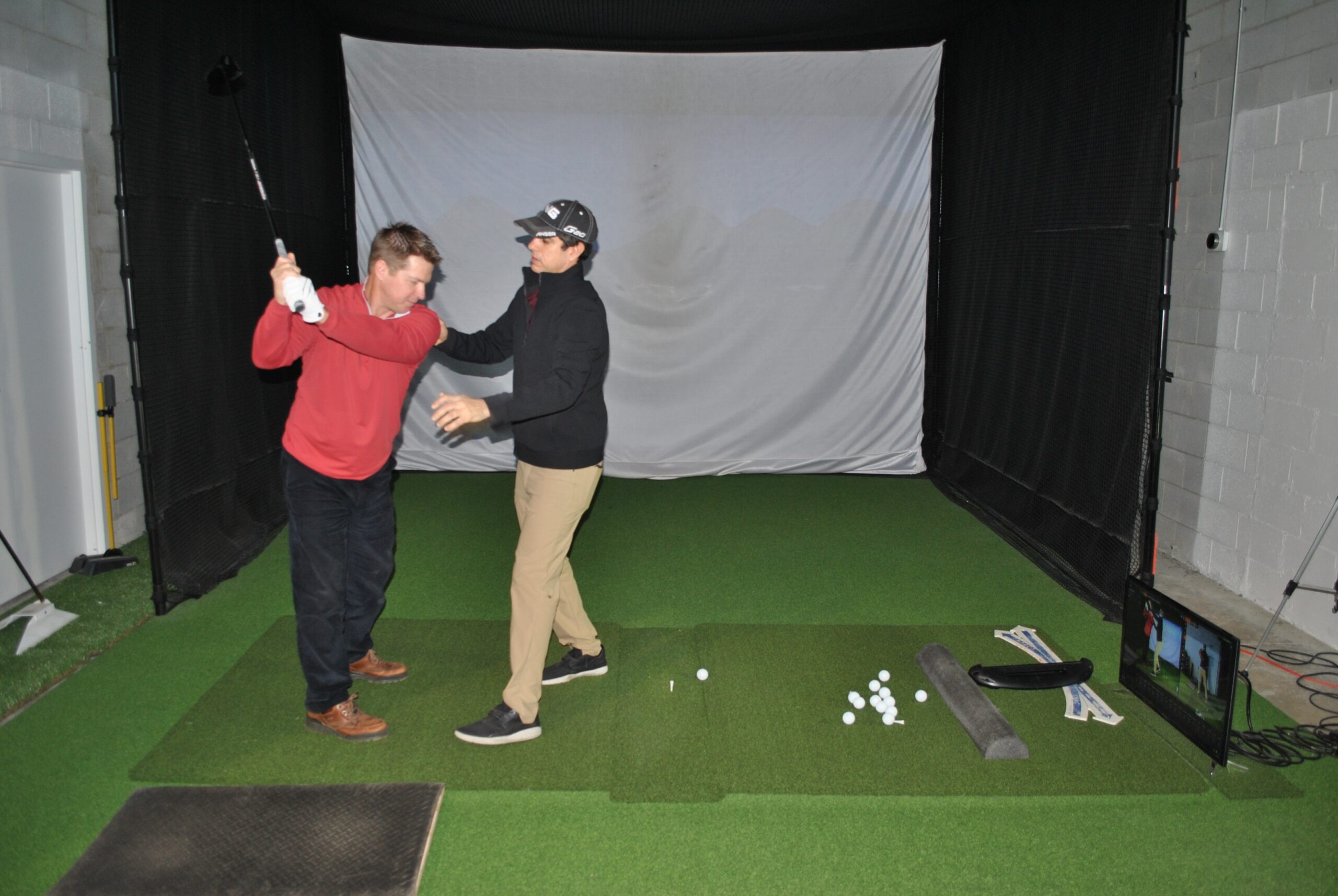Ollen Stephens has been in the golf business a long time. Long enough to remember how it used to be when Chicago’s lovely weather (sarcasm alert) turned abruptly for the worse.
“On Labor Day, you would lose half of your people,” Stephens said. “Once October hit, you went to see if you could sell retail somewhere or do something else until the following March.”
Now for Stephens, the change in seasons is a prompt for him to gear up for his busiest time of the year. Stephens and his partners operate Power Of The Golf Ball, a 7,000 square foot indoor facility in Northfield.
Stephens is among the PGA Professionals who are taking advantage of the latest technology to work with golfers during the winter months. He says his place is buzzing all the time with golfers, especially on weekends.
“We’re packed,” he said.
Louis Sauer also reports similar busy activity at LS Golf, his indoor facility in Northbrook. Sauer, the Illinois PGA Teacher of the Year, makes the case that the best time to work with golfers arguably is when there is a four-club wind chill and snow is on the ground.
“In the summer, sometimes you get people who want a lesson on Friday afternoon and they say, ‘OK, I’m going to play on Saturday,’” Sauer said. “They put pressure on themselves to post a score the next day, and they don’t follow through with the changes. When you’re making those changes inside, you’re not worried about making a score. They need reps and they need to do the reps the right way. It takes time to hone it in.”
Sauer also sees another advantage to indoor work.
“There’s less of a fear factor,” Sauer said. “When you go to a range, and there are people around you, and the student hits some tops or shanks, he gets embarrassed. When you’re indoors, you can work through those changes, and not feel embarrassed. The student is much more willing to learn.”
Sauer is a big proponent of using technology with students, regardless of the season. However, in the winter, most golfers only have the choice of hitting indoors. At Sauer’s facility, which features five hitting bays, golfers have access to Trackman and Foresight Sports, the Sam Puttlab and more. The devices enable players to track data and visually see their swings to measure progress.
“Going to a range and relying on a buddy to tell you what you’re doing isn’t the best way,” Sauer said. “You need to have the right feedback. A student can make much more progress by actually being able to better monitor what they’re doing.”
“Technology exposes and reinforces,” Stephens said. “We have high school and collegiate players come in and use (the technology). They’re able to see, ‘Hey, what I’m feeling is actually happening.’”
Stephens, a PGA Master Professional, is very enthusiastic about Power’s GolfZon. He said after seeing the technology from the South Korea-based company, he decided to make major revisions to get the system installed at the facility. The simulators are state-of-the-art with striking graphics and multiple feedback features for practice and teaching. It also has more than 175 courses for golfers to use.
Perhaps the most interesting aspect of GolfZon is its technology that mimics actual lies on a golf course. Stephens demonstrates by choosing the first hole at Pebble Beach, a par 4 with a sloped fairway from left to right. After hitting his drive, the platform Stephens is standing on begins to tilt in anticipation of his approach shot from the fairway. Suddenly, the ball is below his feet.
“On a golf course, the only place where you get a flat lie is on the tee,” Stephens said. “With GolfZon, you are playing the course as it was meant to be played.”
Stephens is an official representative for GolfZon, marketing it to local golf facilities and to individual golfers who want the system in their homes. The GDR unit starts at $25,000 and the Vision unit starts at $45,000, with a minimum of 10 feet, 6 inches of floor-to-ceiling space required.
Besides the GolfZon units, Power also has a 1,300 square foot short-game area, and shares space with dedicated club-fitting and golf fitness business partners. Stephens says there are five full-time and three part-time professionals working out of the facility.
Both Power Of The Golf Ball and Sauer’s facility have various priced programs for golfers to come in and work on their games. Sauer is high on players being able to use simulators to set up various situations they might encounter on the golf course.
“You usually can’t just go out to a hole on a course and hit multiple shots,” Sauer said. “You can do that in here. They can hit a ton of shots, practice different ball flights, to get a better feel for what they are trying to do.”
Golfers also can use the simulators to just play golf at a time of year when Chicago-area courses look like a vast frozen tundra. Stephens loves what he sees when Power Of The Golf Ball is filled with players on a day when the conditions outside are brutal.
“We have people in here practicing, taking lessons, playing different courses,” Stephens said. “Everyone is doing their own thing. That’s what it is all about. Getting people excited about the game.”

